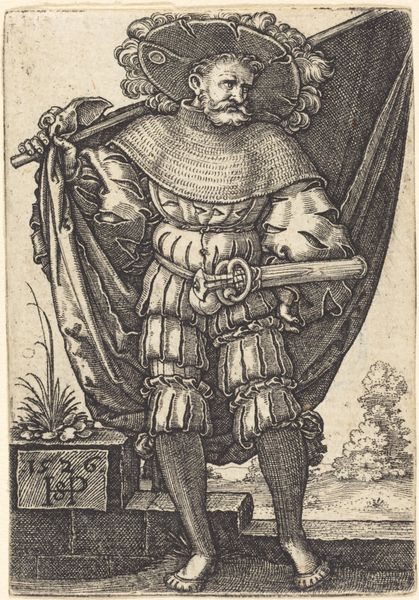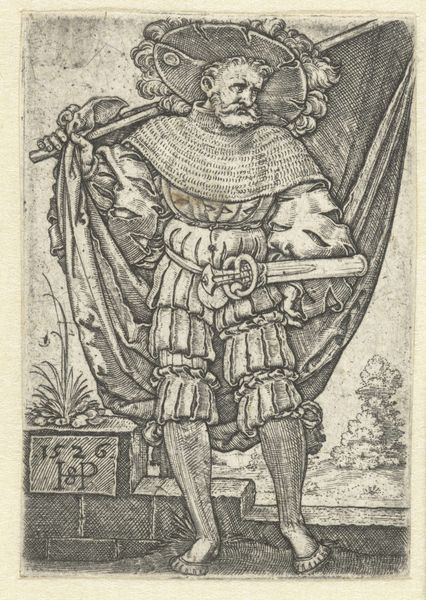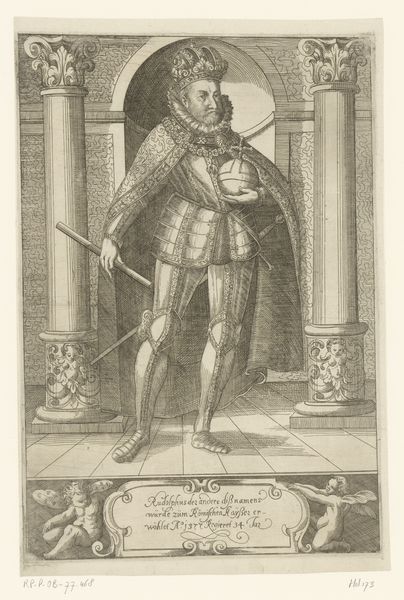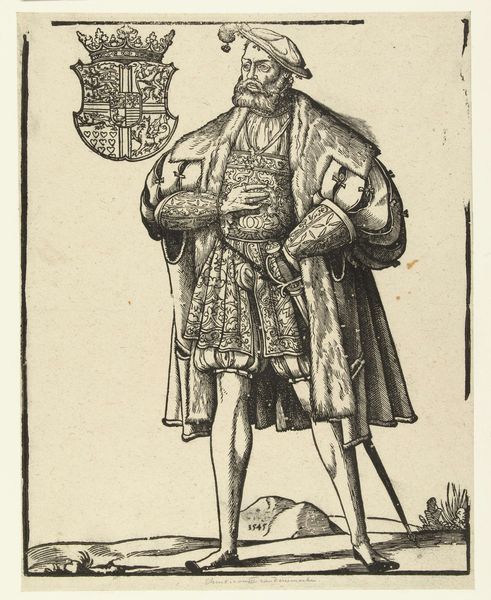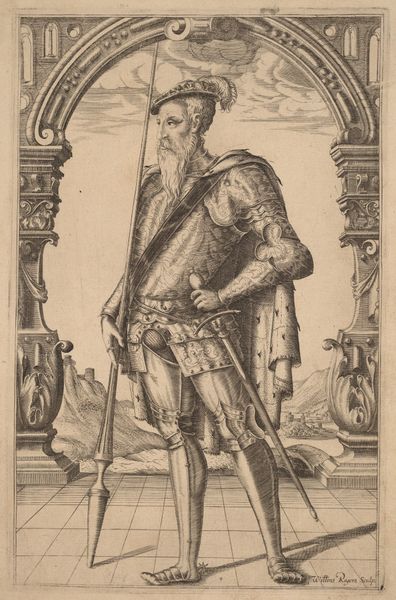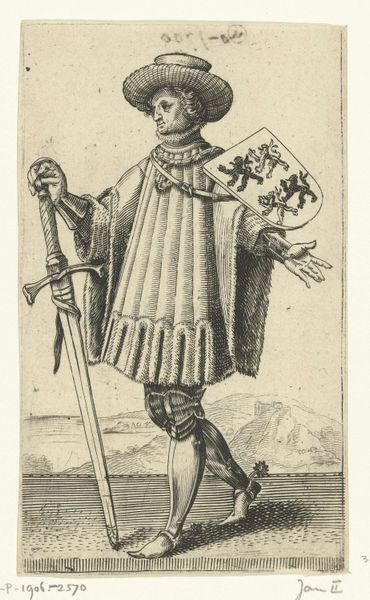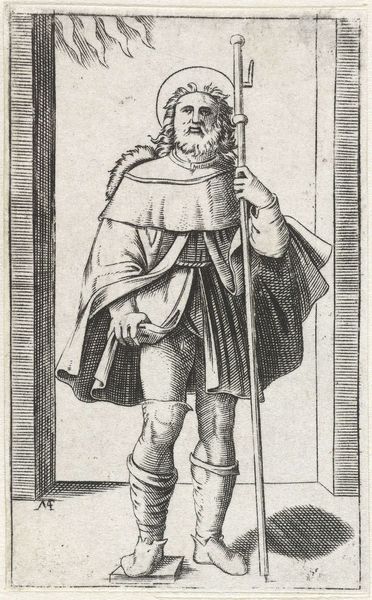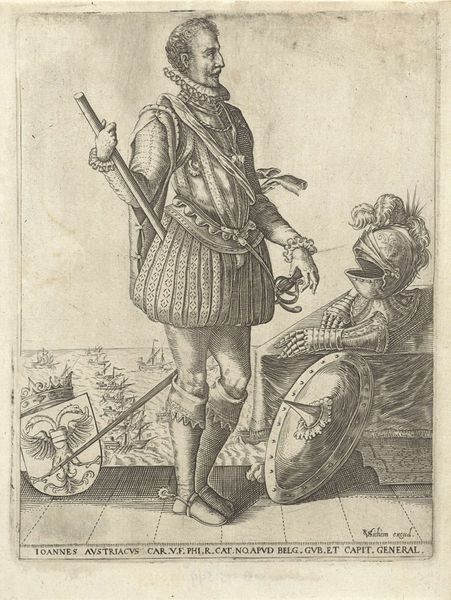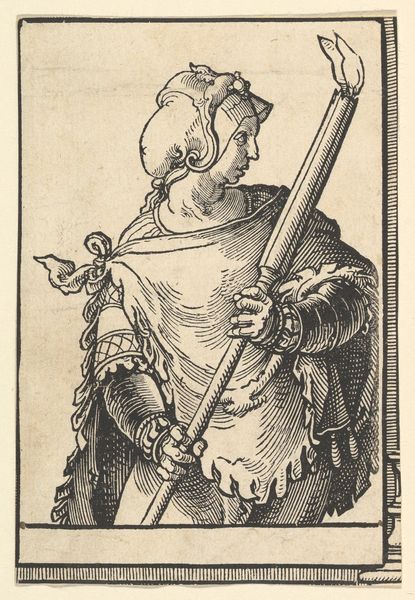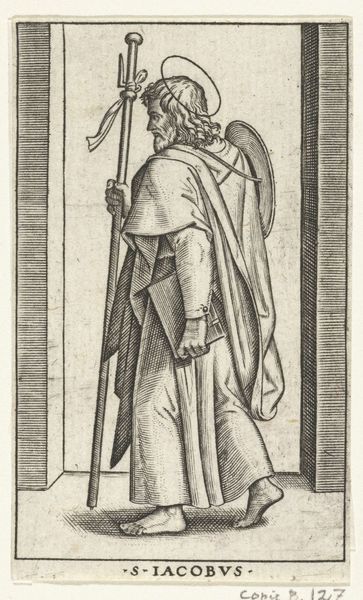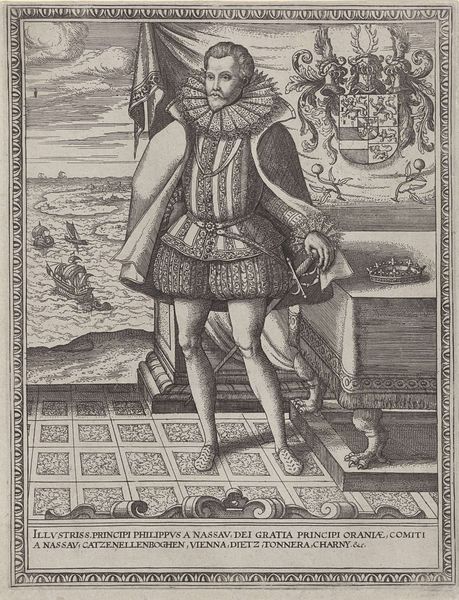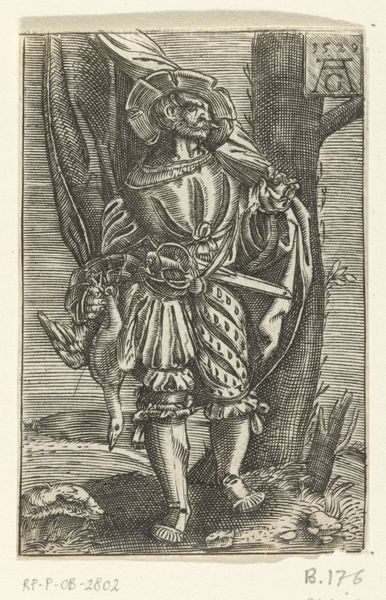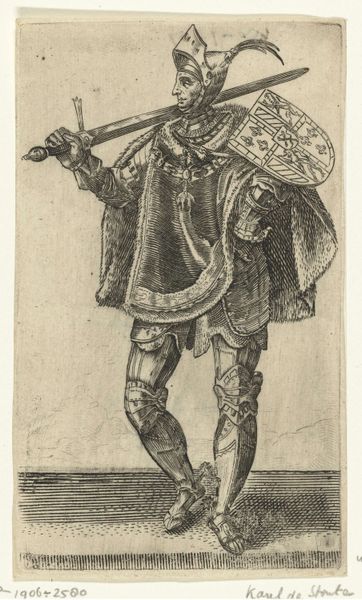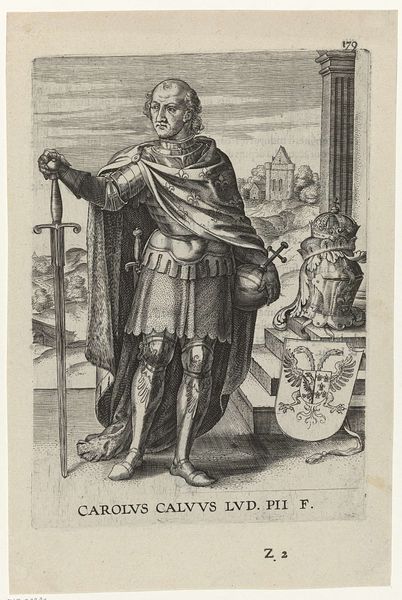
print, etching
#
portrait
#
pen drawing
# print
#
etching
#
figuration
#
11_renaissance
#
line
#
history-painting
#
northern-renaissance
Dimensions: height 72 mm, width 51 mm
Copyright: Rijks Museum: Open Domain
Sebald Beham made this tiny print of a standard bearer sometime in the 1500s. It's rendered in ink on paper using the intaglio process. This means the artist would have used a tool called a burin to cut lines into a copper plate, which was then inked, wiped, and pressed onto paper. The figure is powerfully rendered in the limited space; you can almost feel the weight of his armor. It’s no accident that printmaking emerged alongside the rise of capitalism. This process allowed images and ideas to circulate widely, a real democratizing force. Prints like this one were relatively inexpensive, making them accessible to a broad audience. Beham was one of the “Little Masters,” German printmakers known for their small scale and intricate detail. The sheer labor involved in such a detailed work, carved line by line, is remarkable. It serves as a reminder that even the most seemingly "minor" art forms can carry significant social and cultural weight.
Comments
No comments
Be the first to comment and join the conversation on the ultimate creative platform.
